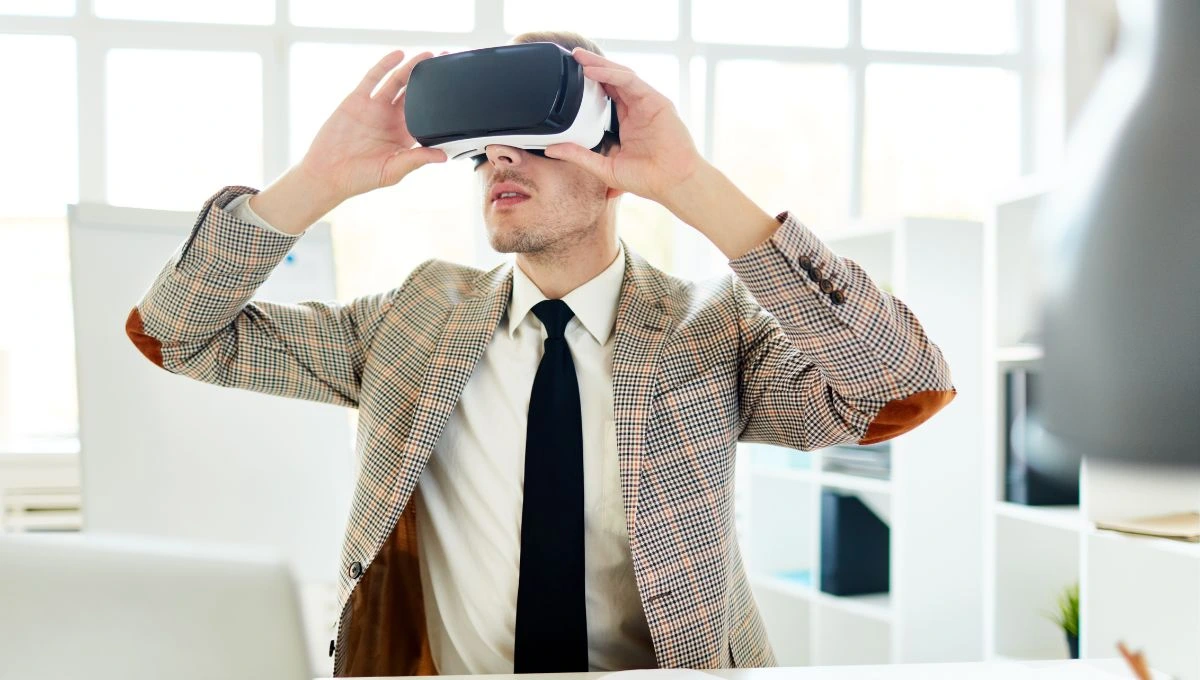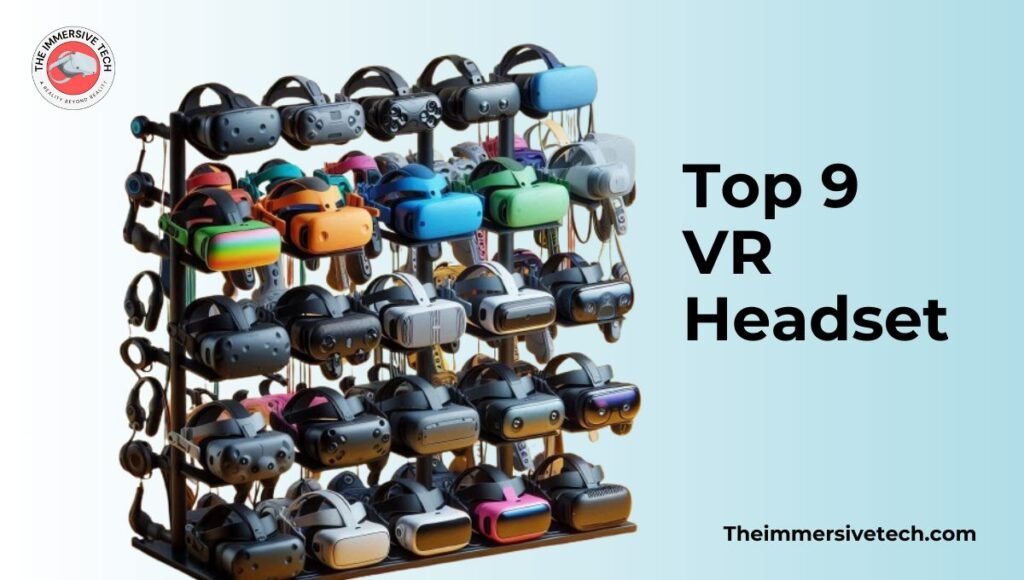Traditional interior design processes are time-consuming and require endless planning to create an aesthetic space. But recently, virtual reality has stepped in to make these simpler for both the designers and clients.
VR’s immersive, 3D features make it incredibly useful in the interior design industry. Thus, brands like IKEA are adopting the technology to show customers what a decor piece would add to their home.
In this article, we will explore how further virtual reality can help designers transform people’s homes. Moreover, let’s have a glance at what design brands have to say about it.
How Does Virtual Reality Impact Interior Design?
Virtual reality is new to the interior design and home decor industry. However, it’s already making an impact on various fronts including design, aesthetics, and ease of plans.
Let’s learn about a few ways VR is changing the interior design industry:
1. Home Visuals
While choosing a new interior design, a complete visual feels more realistic than a list of items. Here, virtual reality becomes helpful.
Interior designers can show a full visual preview of the house renovation in the chosen style. Additionally, an entire catalog of interior styles can be added within the headset. Thus, allowing customers to find various virtual options.
2. Preview Furniture & Decor
Furniture and decor previews are one of the most common uses of virtual reality in home renovations. This allows customers to have a complete freedom of customization. From moving furniture to changing the painting on an accent wall, it can be all visualized within a virtual setting.
3. Testing Major Redesigns
A complete home renovation is more than moving around a few decorations. It includes changing the lights, color scheme, and the overall space. Thus, a preview helps people visualize their home before any work.
Designers can show their clients how the walls, ceilings, and accents will look like with different lighting and colors. A similar process could work for structural redesigns. Since they are complex and expensive, virtual previews can help prevent any mistakes.
4. Location-Based Designs
Interior design is more than customizing a space, and virtual reality can assist with the same. Some customers want to begin designing along with their new home’s purchase. In such projects, a VR design app can give them a tour before they begin the process.
5. Planning Lights and Space
Space planning is one of the most crucial parts of interior design. To create a spacious and functional home, designers have to move around the aesthetic decors. Virtual reality makes it efficient.
Moreover, creating textures with lights around the accent decor pieces is a tricky part. With the help of VR, designers can plan the accent and ambient lights around the room effectively.
Why is Virtual Reality Good for Interior Design?

The best part about virtual reality in interiors is that it can seamlessly show you the final result, from aesthetics to ambience. Here are several reasons why virtual reality is a good choice for interior designers:
Enhanced Visualization
VR makes it possible for designers to communicate and present their ideas effectively. Unlike traditional methods of interior design planning, clients can see and experience the concept virtually.
In addition, clients can request any changes within the virtual design. This concept brings a sense of confidence, and thus, eliminates any fears of the client.
Cost and Time Efficiency
VR can be both cost and time efficient when used by correct measures. For instance, the range of customization options can cut substantial costs for both designers and clients.
For designers, this means fewer materials and references to go through, saving costs and time. On the other hand, a precise choice of materials saves costs for the client.
Furthermore, since most of the work can be done leisurely through the headset, designers need to make fewer visits to the location. Clients can also make changes and upgrades in the interior plan digitally. Thus, proving VR to be a cost and time efficient solution.
Faster Decision Making
Virtual reality offers a clear presentation of design concepts, which can also be quickly modified. In addition, clients can walk through an immersive design and make suggestions as they go.
This leads to informed and quick decision making. If possible, designers can also customize their VR design with other information such as prices of items within the design.
Accessibility
Traditional interior design processes usually take place on-site, with the most people involved attending. However, using virtual reality, people can share experiences, ask for feedback, and involve those who cannot visit the location. This makes interior design processes very accessible.
Error Reduction
Even the finest interior designers are prone to mistakes every once in a while. However, virtual reality reduces those errors by many odds. Comprehensive details about every accessory, upgrade, and material can keep everyone informed.
Top Features of Designing with Virtual Reality Apps
Interior design companies can choose to come up with their own design app for customers. To do so, you will need to determine your business goals and the application’s functionality.
You can take inspiration from some of the best interior design apps, or create your own ideas. Have a look at six features from various apps:
1. Floor Planning
The “Visualize Your Space” app features a floor plan feature. It allows users to visualize the layout of individual rooms and calculate available floor space. Based on the precise measurements, furniture and other additions can be chosen.
2. Room and Furniture View
This is a classic yet dispensable feature found in most interior design apps. After wearing a headset and launching the app, you are placed inside a room at a camera level. This allows you to place furniture and view accordingly.
3. Walkthrough
The ‘walkthrough’ or ‘walking’ feature lets the user virtually move through the building and pause to see certain areas. Some apps may even allow users to interact with the objects as they move around.
4. Light Management
A space interior can look profoundly different based on the light throughout the space. For instance, ambient light can create an intimate space while natural light leads to an open space.
In a virtual setting, homeowners can add various types of lights and customize their space to choose the best ambience. It’s also helpful to create specific interior styles, such as Art Deco.
5. Real-time Customization
Real-time customization allows your designers and clients to see their changes within seconds of selecting the interactive option. This provides a very seamless experience for your clients.
6. Change Replications
Let’s say you changed the color of a painting in one room and liked it. Now you want to make the same changes elsewhere. This feature allows you to replicate your changes effectively throughout the space.
You may also read: – Introduction to Virtual Reality: Unveiling the Wonders of VR
What Do Global Design Firms Say About VR in Interior Design?
Designers have always imagined when transforming old spaces into a new sensation. Virtual reality helps them bring these imagined projects to a three-dimensional projection. Thus, eventually letting them showcase the ideas to clients.
At the global design firm, HOK’s New York office, a design technology specialist, Jess Bayuk has similar views. She says, “Virtual reality and augmented reality allows viewers to get a better sense of how a space will look and feel in a 3D mode of representation that is more like the everyday experience.”

Take the app Primer, for instance. It lets users virtually install real-life wallpapers, paints, and tiles from brands like Farrow & Ball, Hygge & West, and Cle Tile. Thus, users can visualize each product under their room’s existing lighting conditions.
Aimee Lagos, the co-founder of Hygge & West, says “Primer lets people buy with confidence, and confident purchases make happy homes.” There’s a plethora of such AR design apps.

Brands like IKEA and Pottery Barn have developed their own apps to showcase their collections. To measure a room, an augmented reality app called “Cubit” is here. It combines lasers and a rolling sensor with augmented reality to take precise measurements of a space.
Best Virtual Reality Headset of Design Previews
There are many virtual reality headsets in the market to choose from. Here, we’ve listed our three best picks considering interior design:
1. Meta Quest 3
Meta Quest 3 is the leading headset in the affordability and quallity standards. From display quality to refresh rate — it offers all the features that you need to create a dreamy experience for people.
It features a growing library of design apps to help create environments. In addition, the intuitive controls of the Quest 3 make it easy to manipulate virtual objects.
2. HTC Vive Pro 2
The HTC Vive Pro 2 has a high-resolution display which results in a crystal-clear design visualization. In addition, the field of view is quite wide. Thus, it increases the level of immersion even more.
The controls are extremely precise. So, designers and clients can move around objects in the design space and see the changes in real-time.
3. Valve Index
Similar to the HTC Vive Pro 2, Valve Index offers clear and sharp visuals with a wide field of view. Thus, resulting in an immersive experience for the users. However, the differentiating factor here is the Index’s compatibility with design software.
The Index is compatible with various interior design software. This allows designers to import 3D models in the headset and experience them virtually.
You may also read: – How to Choose The Right VR Headset?
Conclusion
Virtual reality is transforming every industry, including interior design. The headsets are an asset to customer experiences rather than an addition. It can increase your clients’ confidence, reduce errors, and make the whole process streamlined.
In the future, as technology advances, virtual reality may be used more than visualization and error reduction. However, it’s for sure that virtual reality is being useful in many cases even now.







